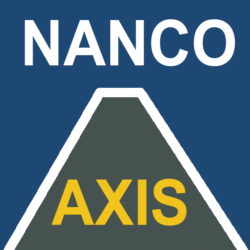Prerequisite: ILS Fundamentals or similar experience
AXIS ILS User Course is a one-week training course where the most important features of the software will be discussed. The student will work through a number of training exercises from known practical cases. The course will also serve as an advanced ILS course for those who need a deeper understanding of the ILS behaviour in adverse terrain. The course is based on the General ILS theory course, and will give the student a good understanding of erratic ILS behaviour and the effect of ILS signal propagation in different types of terrain. The course will discuss antenna system design and present solutions for installations and setting up in adverse terrain and multipath rich environment.
The course is based on EU Regulation 2017/373 minimum requirements, and is based on the ILS Fundamentals course. It covers the remaining taxonomy levels four and five:
Level 4 — The ability to establish a line of action within a unit of known applications following the correct chronology and the adequate method to resolve a problem situation. This involves the integration of known applications in a familiar situation.
Level 5 — The ability to analyse new situations in order to elaborate and apply one or another relevant strategy to solve a complex problem. The defining feature is that the situation is qualitatively different to those previous met, requiring judgement and evaluation of options.
The course is aimed at maintenance technicians having ILS as the main working area as well as ILS instructors og specialists specifying, installing and inspecting systems. It is also an eye opener for flight inspection crew, where it will enhance the understanding of the signal in space versus adjustments and settings on ground.
At the end of this course each student will be able to:
a. Perform independent computer simulations for known antenna system in medium complexity airport environment.
b. Understand the possibilities and limitations for computer modelling and simulations.
c. Read flight inspection reports and thereby specify measures in order to enhance the signal quality.
d. Understand the effect of phase errors when making ground measurements in the near field.
e. Decide what kind of foreign objects or construction that will have an impact on the ILS signals and what will not. Hereunder specifying the necessary critical and sensitive area for a given system based on the local conditions.
f. Judge the design quality and estimate the expected performance of a system for a given site in procurement or upgrade situations.
g. Make good site surveys and specify the optimum antenna system and location for various sites.
h. Make independent designs of setting up procedures for all kind of ILS systems.
Course programme (changes can be suggested by users):
Day 1: Localiser (LOC). Performance analysis of single- and dual frequency localisers. Principles of simulating antenna systems, wave propagation, scattering objects, receiver and autopilots. ILS intercept procedures, autopilot capture process. Some key points in ICAO ANNEX 10 & ARINC 710. Workshop in using AXIS 110J for analysing localiser performance using orbits, approaches and the proximity effect in the nearfield.
Day 2: The impact of antenna feed errors on the near field and far field signals. Feed error stability testing. Correlation tests on monitor readings versus signal in space. Student workshop. Definition of critical and sensitive areas for ground movements and taxing aircraft. Airport modelling of buildings and terrain obstructions to simulate the DDM bend structure and clearance due to multipath. Workshop in making scattering object models. New developments in LOC systems for future congested airports.
Day 3: Discussion on flight inspection procedures, signal processing and approval criteria. Field measuring procedures. Simulation techniques – from site survey to modelling the site. Working through a number of practical examples in airport modelling. Analysing the results including simple and complex bend analysis techniques.
Glide Path (GP). Performance analysis of single- and dual frequency glide path systems. The effect of slopes in terrain, antenna feeds and mechanical alignment of antenna system. The proximity effect in the nearfield. The impact of antenna feed errors on the near field and far field signals. Correlation tests on monitor readings versus signal in space. M-ARRAY clearance signal patterns, capture effect in receivers. Workshop in using AXIS 330J on Null Reference and M-ARRAY.
Day 4: Airport modelling of buildings and terrain obstructions to simulate the bend structure and clearance due to multipath. Discussion on flight inspection procedures, theodolite and tracker location, signal processing and approval criteria. Workshop with simulation techniques – from site survey to modelling the site. Working through a number of practical examples. Modern optimising techniques to get optimum signal quality on adverse sites. Using AXIS 330J for analysing glide path performance using vertical traces, level runs, approaches and window diagrams.
Day 5: Definition of critical and sensitive areas for ground movements and taxing aircraft. Building Restriction Areas. Working through a number of practical examples in airport modelling. Provide some “ready made” “ready simulated” results for specific problems on the quality and performance of LOC and GP signal on space and how to correct them. Evaluation and handing out course certificates.

